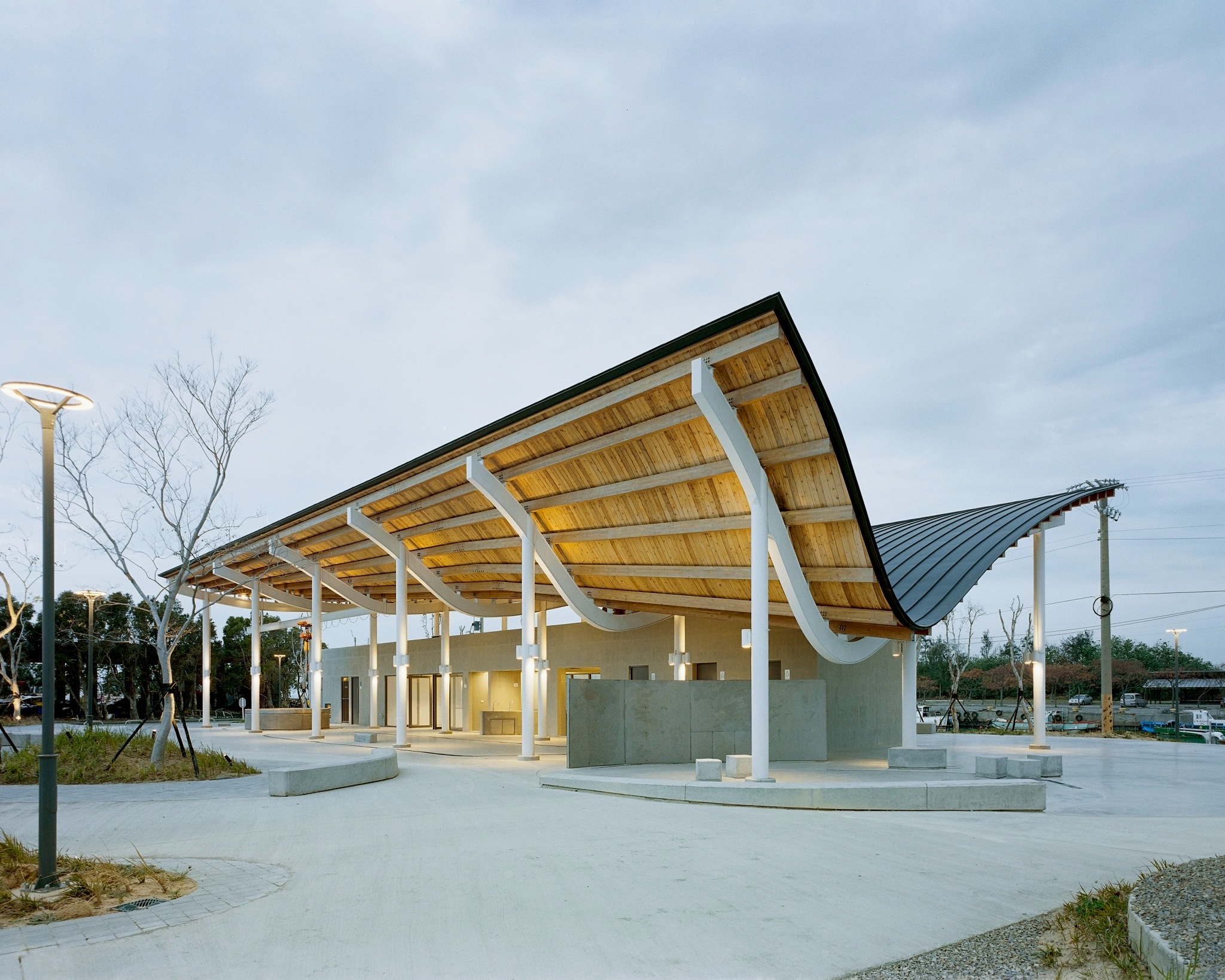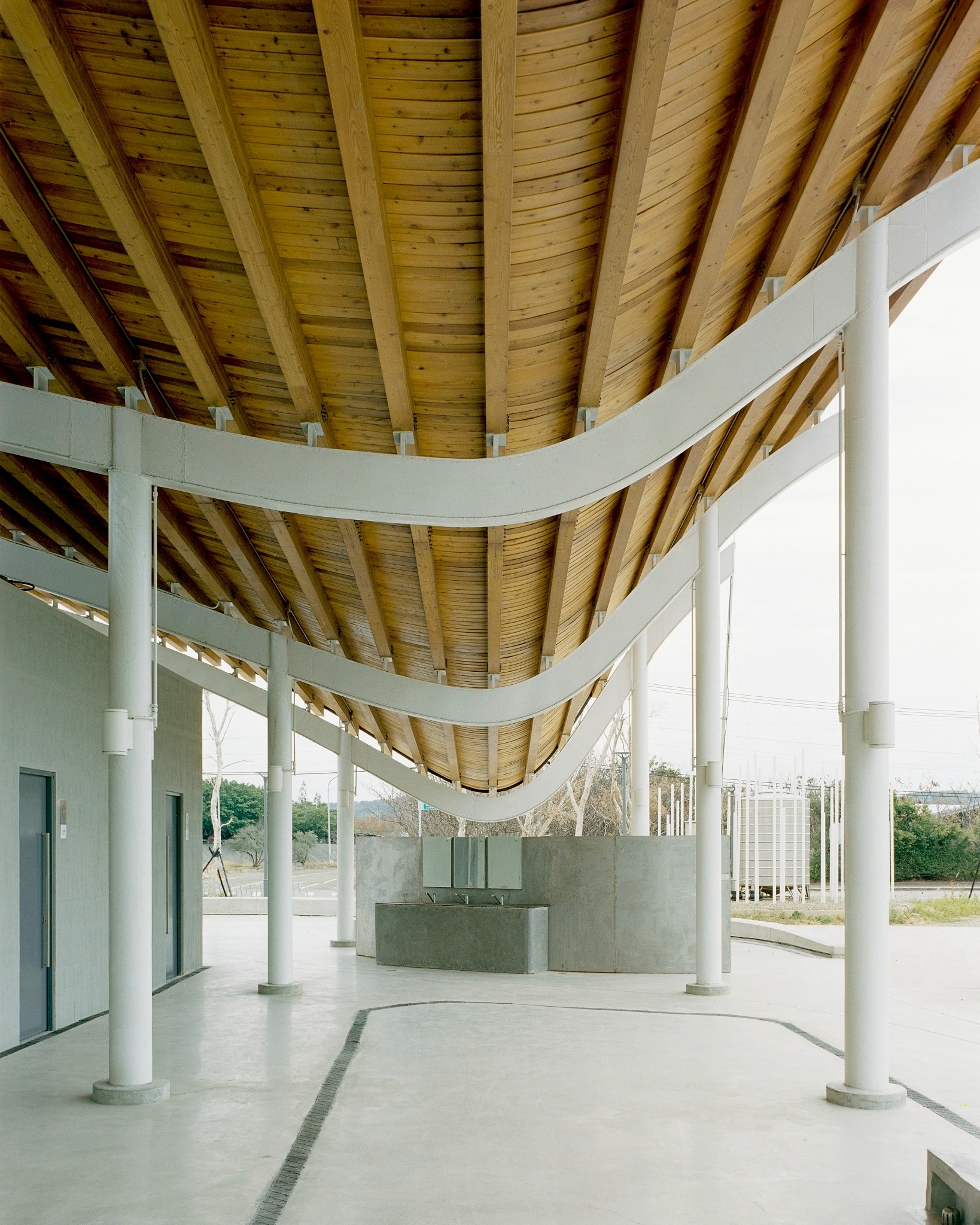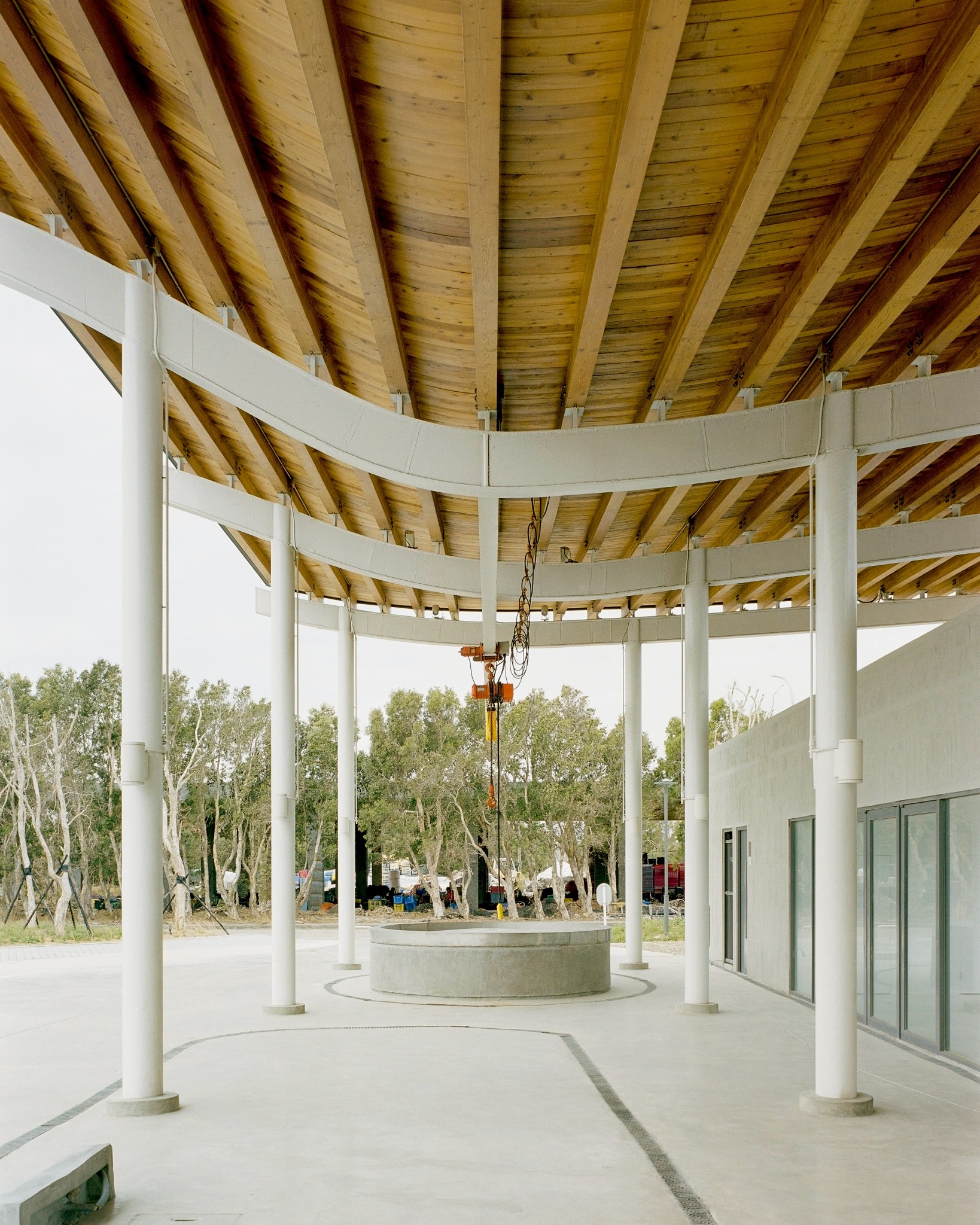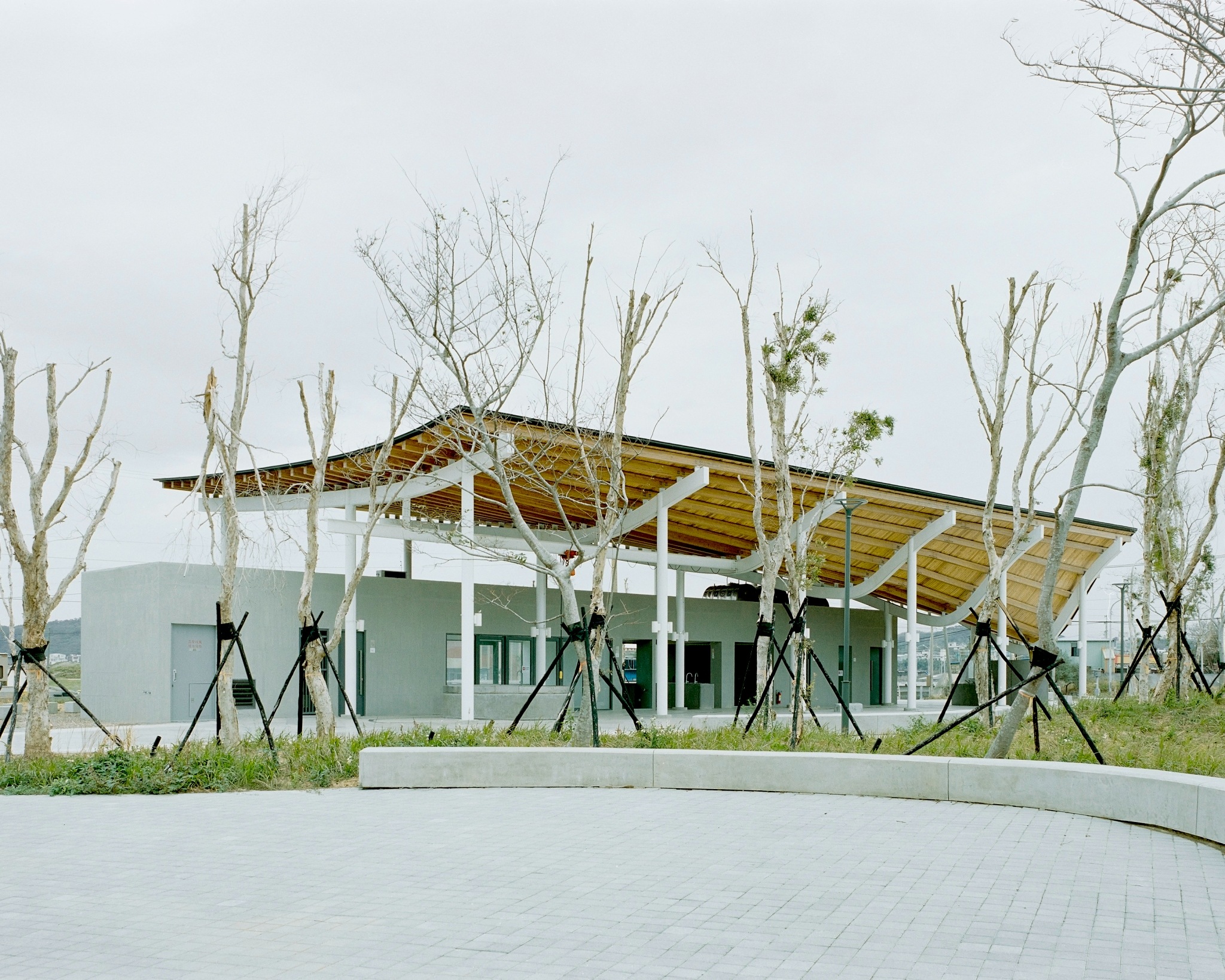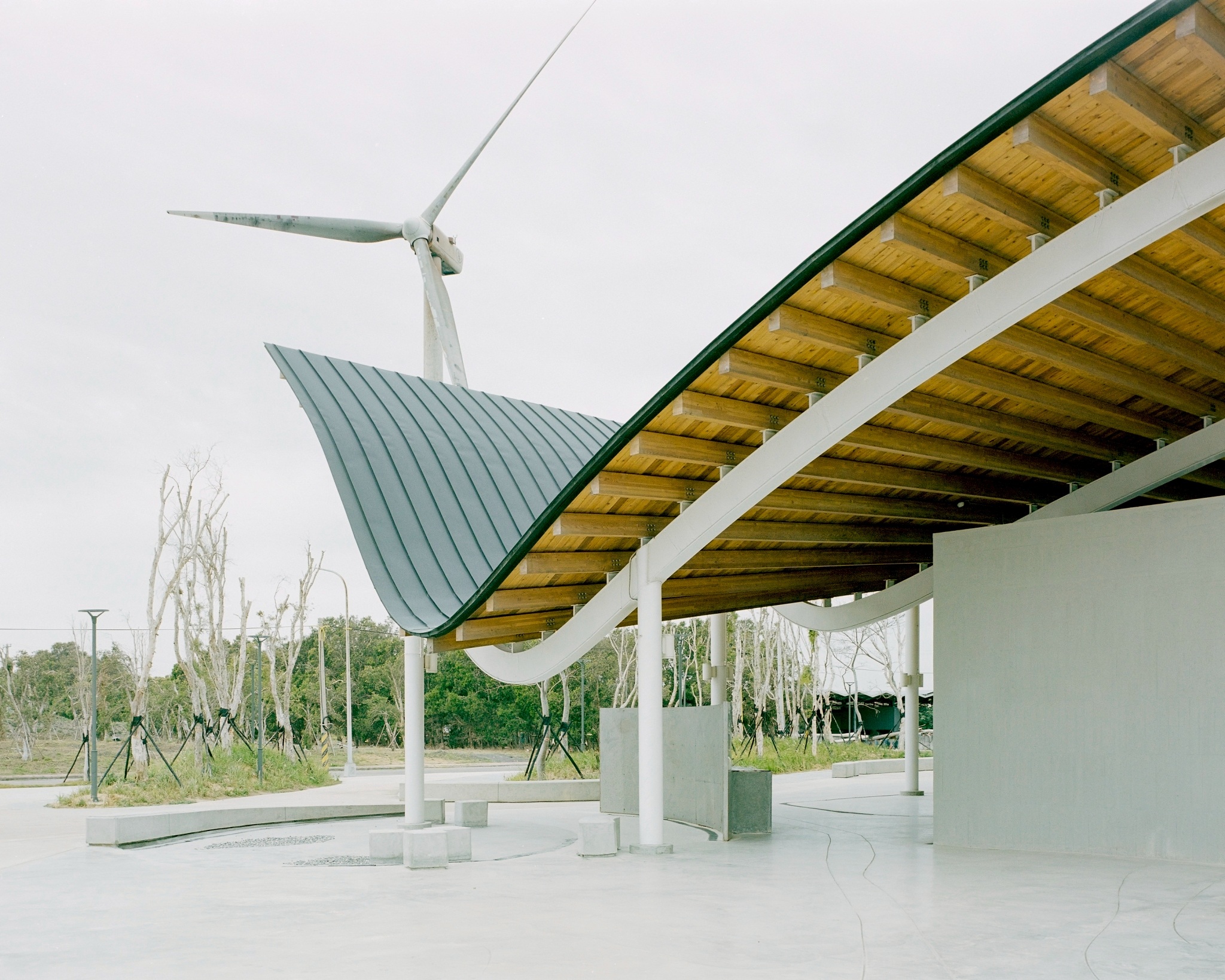Site Context
Haishan Fishing Port occupies the southern edge of the Xiangshan Wetlands in Hsinchu. The harbor opens to the front while a belt of wind‑break trees shelters its back, and a tidal channel separates it from the fixed‑net fishing grounds and the Naruwan Indigenous settlement. A collage of the Harbor Temple, lightweight steel sheds, storage huts, rows of Melaleuca and distant wind turbines sketches a daily coast where sea breezes meet labor. Boats work to the rhythm of the tide; fishers unload, mend and sun‑dry their nets, turning the road beside the pier into a drying deck. The city therefore proposes a direct‑sale market and a “Fish Classroom” to celebrate and extend this living fishing culture.
The Market – Turning Work into Landscape
The market sits at the center of the site beneath an expansive roof that weaves timber shed, concrete north wall, berms and wind‑break trees into one open field linking dock and sales. The concrete wall runs parallel to the pier and, together with the berm and trees, shields the space from seasonal winds; a semi‑outdoor classroom is inserted between, keeping sight‑lines and circulation clear from harbor to market. Concrete fixtures—circular fish pans, cleaning tables, temporary stalls—are laid out in the order of the sales process, while a steel‑beam gantry and timber roof frame both vertical and horizontal movement. Rainwater is guided along the ridge into a shallow depression at the entrance, creating a small landscape moment.
Views & Experience
A visual axis structures three layers of experience: ① Through the classroom window the bustle of the fish auction is framed by docks in front and trees beyond; ② A south‑side grass slope and Melaleuca grove filter summer winds—between branches visitors glimpse work beneath the shed before the path draws them inward; ③ The shed and its service core act as an “anchor point” for the harbor, combining sales, education, rest stop and transit node, transforming everyday fishing routines into an open scene that travellers can join.
基地環境
海山漁港坐落於新竹香山濕地南端,前臨港口、後倚防風林,與對岸定置漁場及那魯灣部落隔溪相望。護港宮、混凝土或輕鋼棚架、儲藏屋、白千層及遠方風力機,描繪出海風與勞動交織的濱岸日景。漁船依潮汐作業,漁工卸貨、補網、曬網,港邊道路化作曬網平台。這裡的定置漁場以圍網捕撈漁穫方式,視潮汐返港進場、群體挑漁販售成為的漁市特殊印象,因此市府擬導入直銷市場與食魚教室,藉以推廣漁業文化。
漁市場-將海港作業成為風景的對應
港口旁的漁市場位在基地中央,是大棚子下的景觀,以棚、牆、丘與林組構,串聯定置漁場的漁工的販售作業、碼頭作業。市場包圍在基地挖填平衡小丘與樹林間,北向混凝土建築量體平行碼頭作為牆面,與土丘、防風林併置一同抵擋季風、建築保持透明開口,教室面相港口也面對市場,使視覺穿透、活動穿梭流動。
定著於土地的水泥工作設施 - 量體、圓形漁盤、殺魚台、臨時攤販、洗魚台、座椅等工作休憩設施,是漁場重要的地景角色,也有秩序的依循定置販售流程編排著。鋼柱鋼樑結構架起重要的工作物件-鋼構天車,並拉起空間序列,導引下方設施配置,亦架構起木構屋頂,將海港的雨水帶至入口地坪,讓水有機會成為聚集的小漥地景,是以輕木構棚對話鄰旁混凝土構架的作業場域。
環境與想像
設計以景觀視線為軸,形成三重體驗:① 透過教室窗景,看見漁市搶魚活動,與背後林帶構成漁市風景畫框;② 南側草坡-白千層林過濾海風,枝隙間可遠望棚架下作業,並流線銜接場區;③ 棚架與服務站概念構成「港埠錨點」,結合販售、教育、休憩與交通轉換,將漁港日常轉化為旅人可參與的開放場景。
(全文請見《實構築》季刊25期)
